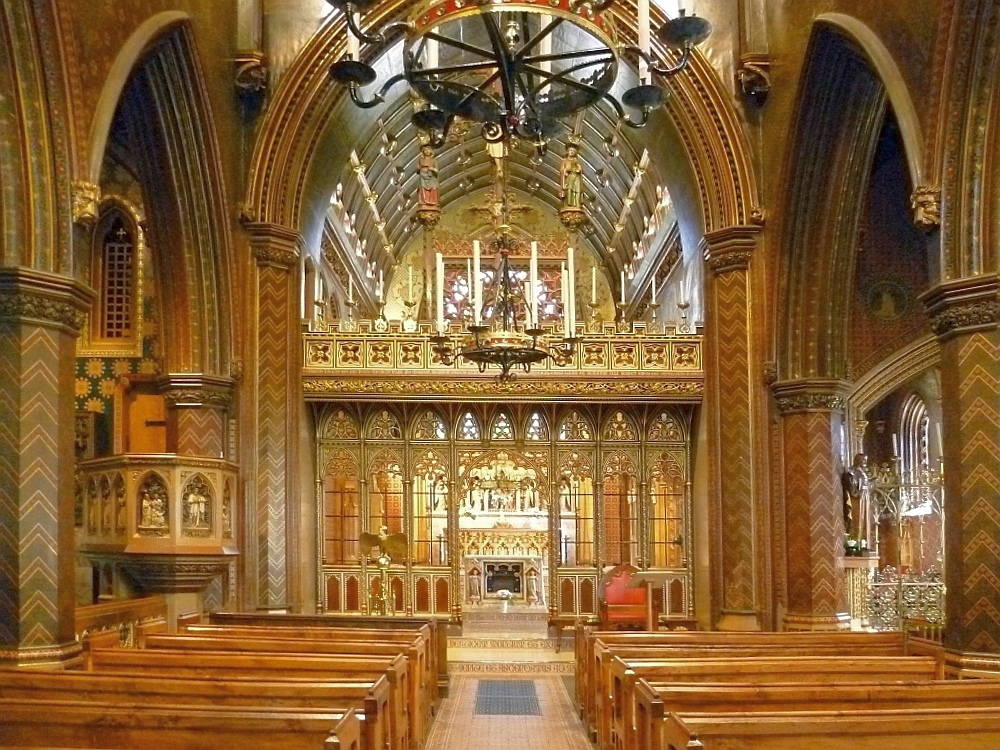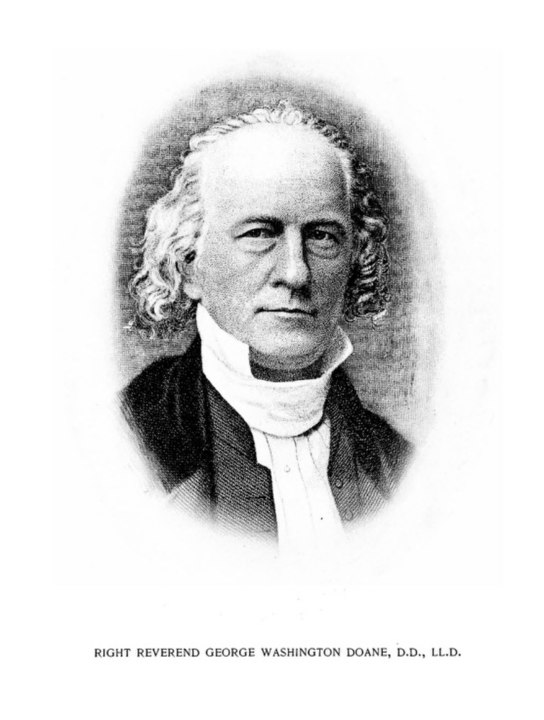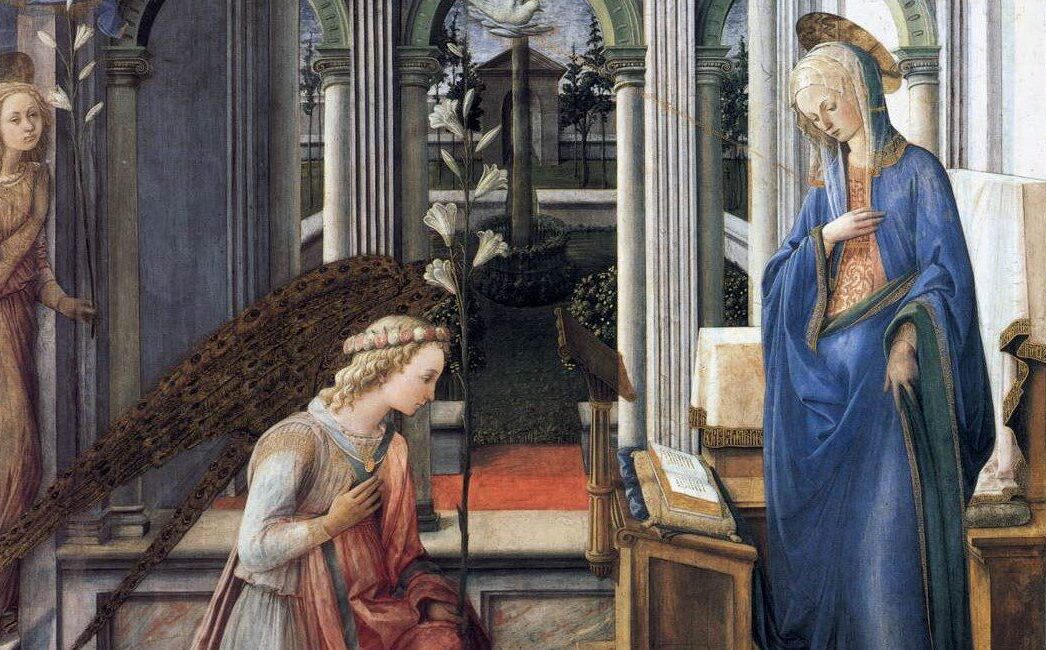If Americans were ever polled about what architectural style is the most traditional for Christian ecclesial use, the resulting list would likely be headed by Gothic, or at least by styles taking broad inspiration from medieval Anglo-Saxon models. By no means a uniquely Catholic phenomenon, American neo-Gothic was primarily an innovation of, and long predominated within, the Episcopal Church. In some parts of the country it even became ubiquitous among various forms of low church Protestantism, which had until then spent centuries attacking all vestiges of the Catholic Middle Ages.
As a matter of historical record, however, Gothic was the principal style of architecture of parts of Christian Europe for only a few centuries towards the beginning of the second millennium and did not come to be seen as the “traditional standard” until the Victorian era. The reasons for this development are interesting not only for the sake of historical understanding, but for what they can tell us about the nature and purpose of ecclesial architecture today.
An American Experience

When the United States first became independent, few Catholic churches were to be found within the borders of the new nation. Not only were Catholics a small minority, but full public practice of the faith had been virtually non-existent outside Pennsylvania for nearly a century. In Maryland, anti-Catholic laws replaced early toleration, driving Catholics out of political life and the practice of their religion behind the closed doors of chapels in private homes. Such “second class” status was better than the aggressive hostility faced in Puritan New England. Predictably little in the way of a Catholic architectural tradition had been able to develop under such circumstances. And little was done to make up for lost time during the decades immediately following the Revolutionary War, despite something of a minor Catholic building spree.
Rather than look to earlier church models, those responsible for the new Catholic buildings took as their reference point the neoclassical style then popular in secular (particularly government) architecture. Benjamin Henry Latrobe, who designed aspects of both the Capitol and the White House, was even hired to build the most prominent of the new churches, the cathedral for the Diocese of Baltimore (now the Basilica of the National Shrine of the Assumption of the Blessed Virgin Mary). This was not merely a case of conformity to local stylistic preferences. Neoclassicism was itself a new import, and was adopted in preference to the more English oriented architecture of the colonial era and was adopted not just as a form of cultural independence but as the preferred architectural style of an international ideological movement.
To a considerable extent, American Catholics of the day were primarily influenced by, and wished to present their religion as compatible with, the values and tastes of secular society. The extent to which American Catholic adoption of neoclassicism was influenced by that agenda, how much by non-ideological following of architectural fashion, and how much by an instinct for inculturation may, naturally, be difficult to determine. What we can say is that, on the one hand, the desire to reflect secular American models was an important motivation but that, on the other, the churches created according to that model were eminently suited for Catholic worship and became the basis for a solid American Catholic architectural tradition.
Gothic Revival
A precisely opposite attitude guided the movement which inspired the American Christian embrace of medieval styles—Britain’s Gothic Revival.
The Gothic Revival was influenced by, and was itself an influence on, numerous cultural, social, aesthetic and religious trends. One was the variant of romanticism decisively influenced by Sir Walter Scott, which rejected the rationalism and classicism of the “Enlightenment” and turned instead towards a love of all things medieval. In all areas of life from political organization to architectural styles, rationalist classicism—with its love of artificially imposed, putatively “rational” and (typically) symmetrical “unity”—was also rejected in favor of organic development. Romanticism favored the organic on aesthetic or sentimental grounds. Intellectual conservatism as influenced by Edmund Burke had more philosophical reasons for the same preference.
Gothic architecture came to be viewed as exemplary of the natural and organic. A Gothic architect who, for instance, designed a baptistery jutting out from the left wall of a church would leave the right wall asymmetrically straight unless he needed to find space for, say, an adoration chapel. A classicist faced with the necessity having a baptistery jut from the left would be tempted to find some feature he could place on the right merely so that both sides would be symmetrical.
Secular and aesthetic considerations often meshed well with religious views that developed during the same period. From the 16th until the 18th century, Europe had been unified in rejecting medieval models. Secular classicists rejected the medieval period as the age of faith. Christian classicists, both Catholic and Protestant, tried, at the cultural level, to pick up where some later Church Fathers had left off after the fall of the Roman Empire, striving to imitate all aspects of Greek and Roman culture not inimical to Christian faith. Medieval culture—not just when taken as a whole but in almost all its aspects—was viewed at best as inferior, at worst as uncivilized. It was not even uncommon for Gothic architecture to be dismissed as inherently barbaric.
Romantic literature began to break down anti-medieval prejudices just as the secularizing course of the 18th century, and its culmination in the French Revolution, led many to associate strict classicism with secularist hostility to Christianity and to seek an alternative model in the Medieval “age of faith.” In Britain the medieval turn was embraced by both Catholics and High Anglicans. The latter provided the Gothic revival with much of its initial impetus, despite the fact that its single greatest practitioner was the Catholic convert A. W. N. Pugin (1812-1852). The reasons for this apparent oddity were simple. Whereas classical and Baroque architecture were strongly oriented towards the Mediterranean world, particularly Rome, Gothic was emphatically northern. Some English medievalists even claimed that it had originated in their country—some proto-Gothic elements having been developed there before being incorporated into “full” Gothic by the French Abbot Suger.
Stylized Theologies
Perhaps most importantly, however, Gothic was in many ways a logical accompaniment to so-called “via media” between Catholicism and Protestantism that had always been embraced by segments of the Church of England, which claimed to be the true successor of the medieval English church and, thanks to the Oxford Movement, was experiencing a resurgence just as medievalism was coming to the fore. Anglo-Catholicism demanded a form of architecture suited to Catholic ritualistic worship yet not steeped in Roman Catholicism. Perhaps ironically, Baroque was associated with the “extremes.” Originally a Catholic style, Baroque had become fashionable among late 17th century Anglicans but was used for churches whose layouts conformed to the priorities of moderately low church Protestant services: its minimalist liturgy and heavy emphasis on preaching which had only been exacerbated by Enlightenment influences.
Victorian Anglo-Catholic advocates of Gothic criticized churches constructed during the previous two centuries on the grounds that they were designed to facilitate communication between minister and congregation rather than the ritual worship of God. As Phoebe Stanton’s The Gothic Revival & American Church Architecture explains, “churches in this style were wider in proportion to their length than medieval examples. They had no aisles, and galleries were introduced at the sides and across the back. The chancels which resembled the medieval kind—a smaller, lower, eastern chamber, continuous with the long dimension of the knave but cut off from it by a [rood] screen—were omitted altogether. When an old church had such a feature, it was often abandoned as a ceremonial center.”[1] The purpose of such design was to “place the people near the minister, so that even at the cost of some dignity and propriety they could see what was happening.” It was also believed that the form of worship for which such churches were built were “symptomatic of the secularization of the church, which had, in their view, caused it to lose its constructive social influence.”

Architectural preferences among English Catholics were similarly linked to broader, and at times highly substantive, debates. During the decades surrounding Vatican I (1869-70), some Catholics denied papal infallibility while others exaggerated its scope. That some who held such errors would promote either Gothic or Baroque architecture as a cultural statement of theological belief was predictable enough, but even those holding the authentic Catholic doctrine could fiercely disagree as to whether “inculturation” or “Romanita” better facilitated the life of faith. Some advocates of Gothic looked primarily to monastic spiritual models and viewed the High Middle Ages as a Catholic golden age. Seeing the Counter-Reformation as an age and a grounding in the Ignatian-influenced spirituality predominant during that era were often linked to a preference for Baroque.
Such attitudes could be taken to extremes. When John Henry Newman asked Pugin to design a chapel for the Oratory of Saint Philip Neri which he had founded, the architect refused on the grounds that he could not design a chapel in an English and medieval style for a priestly society whose cultural origins were Italian and whose spirituality was broadly oriented towards the Ignatian rather than the monastic. He even argued that such factors made it inappropriate to introduce the Oratorians into England.[2]
Gothic Comes to America

Similar stridency could be found among Anglican advocates of the Gothic revival at this time. The Cambridge Camden Society and its publication, The Ecclesiologist, were particular marked by contentiousness over minor stylistic details. It advocated strict conformity with medieval Gothic stylistic elements, excluding the possibility of stylistic evolution, while opposing the strict copying of particular medieval churches. American neo-Gothic was particularly criticized, since lack of historical knowledge among our country’s architects inevitably resulted either in strict copying or in innovation. Nothing more substantial was at issue when such criticisms were made. Not only were American Episcopalian devotees of Gothic motivated by the same concerns as the British High Anglicans from whom they took their lead, but the High Church tradition was, if anything, more influential among the former than among the latter. In the religiously diverse United States, those who chose to be Episcopalian were commonly attracted to the higher and more Catholic-leaning wing of the Anglican tradition. The Church of England, however, included many Low Church Protestants and many who were of the “Broad Church” tradition indifferent to ceremonial and architectural questions, people who adhered to Anglicanism largely because it was the official state church and included in its ranks a preponderance of the English population. In time, however, the Gothic revival became so fashionable in our country that it not only became the de facto standard for Episcopalians but spread to Presbyterians, Methodists, and Baptists.
American Catholics tended to be more ambivalent, largely because of broader cultural factors. Prior to massive immigration from Germany and Ireland in the 1840s, Catholic were no more than a small minority of the American population. Only the Irish came near to habitually embracing the Gothic style widespread throughout their native country. Germans, together with the Italian and Polish immigrants who began to enter the U. S. later in the century, frequently looked towards a variety of other stylistic models besides the Gothic, including classical, Baroque and Byzantine.
Built-in Belief
While there are naturally many things which we can learn from the history of the Gothic architectural revival, and from the reasons for it, as well look to the future, I will limit myself to one key point which must necessarily be of major practical concern for Catholics in the United States today—the fact that aesthetically excellent architecture is not the same as architecture appropriate for worship. The Baroque Protestant churches which the Gothic revival opposed are generally fine aesthetic achievements, yet they were still designed to facilitate interaction between minister and congregation, to be lecture halls for religious instruction rather than to celebrate liturgical, sacrificial worship of God.
It is obvious that Catholic churches built in the United States during the second half of the 20th century tended to be built on the same type of floor plan as English Protestant Baroque ones, partly because of the same emphasis on instruction as opposed to ceremonial worship and partly out of a desire to shift much of the focus of those attending Mass away from the ritual sacrifice and onto their fellow members of the congregation. The materials with which such churches were constructed and the lack of traditional ecclesial ornamentation created a look and feel reminiscent of cheaply constructed public school auditoriums rather than of the sacred.
The well-known architectural revival that has taken place among American Catholics since the last years of St. John Paul II’s pontificate has, in my experience, tended to focus primarily on reversing the latter of these two trends. Good reasons exist for such a priority of introducing traditional ornament to the church building. The most basic is probably the fact that it is easier, quicker, and more affordable to beautify an existing church than to build a new one from the ground up. I also would not be surprised if many Catholics, particularly those who are inclined to traditional reverence, find the existence of the sense of an overall sacred atmosphere created by traditional ornamentation to be a greater aid to prayer, or at least more appealing, than a more ritualistically, liturgical oriented floor plan.
It also seems likely that considerably more members of the clergy and of the influential laity are friendly towards traditional ecclesial ornamentation than to floor plans with a more liturgical focus. Hostility to the core substance of Catholicism has, since the 1960s, always been more widespread than hostility to some of the more “external” aspects of Catholic practice. In my own experience, I have seen situations in which dissent dominated yet traditional ornamentation was still chosen for the design of new “in the round” churches. More than a few doctrinal dissenters—who would fight tooth and nail against building or renovating churches whose layout would direct people’s attention more towards God and more away from the congregation, or who are primarily interested in having a “communal experience”—are indifferent to, or even positively like, traditional architectural ornamentation provided the layout follows forms largely oriented towards the congregation. Even those who prefer to avoid traditional ornamentation can see it as an easy point of compromise, doing much to satisfy those of more faithful dispositions without requiring a change in who—God or neighbor—our attention is focused on as Mass is celebrated.
Two other groups are also likely to be inclined to combine churches “in the round” with traditional ornamentation. One is those priests (more numerous than sometimes realized) who prefer ignoring unpopular Catholic doctrines but believe in the truth of them and will affirm them if explicitly asked. Another is those who more actively promote Catholic teachings on such topics as the male priesthood, sexual morality, and unborn life but are indifferent to traditional liturgy. Both of these groups tend to want the Mass to be primarily focused on God yet are inclined to de-emphasize or ignore the specifically sacrificial aspect worship at Mass while placing a much stronger emphasis on the community than was historically typical.
A similar attitude is reflected by the fact that priests will usually find their congregations more receptive to increased use of Latin, of chant, and of such ceremonial forms as incense and torchbearers than they would be to celebration of Mass ad orientem.
Gloria Dei
What this attitude toward sacred architecture seems to indicate is that all but the real ideologues are receptive to increasing architectural, and to a lesser extent liturgical, beauty, as well as to changes that put a greater focus on worship of God than was common for decades. Indeed, most American Catholics favor retaining the strong congregational focus introduced in the last century. To make God more “part of the group” than he has been for some time is at odds with the group thoroughly abandoning its focus on itself in favor of a more complete theocentric emphasis.
For this reason, I would say that returning to traditional church floor plans and ad orientem celebration—measures promoting a theocentric emphasis—are two of the most useful reforms that could be introduced, but also two of those which must be preceded by the most extensive catechetical instruction.
[1] Stanton, Phoebe B., The Gothic Revival & American Church Architecture: An Episode in Taste, 1840-1856. Baltimore and London, The Johns Hopkins University Press, 1968. 11.
[2] Hill, Rosemary. God’s Architect: Pugin & the Building of Romantic Britain. New Haven, Yale University Press, 2007. 371.




